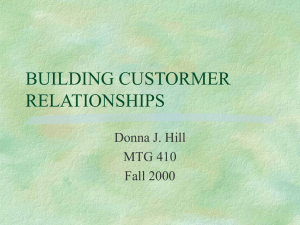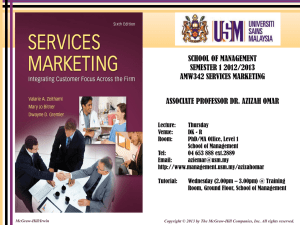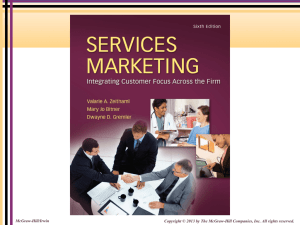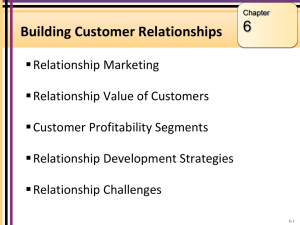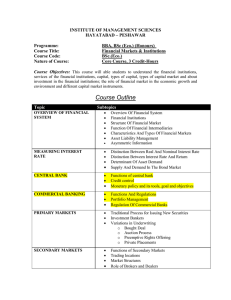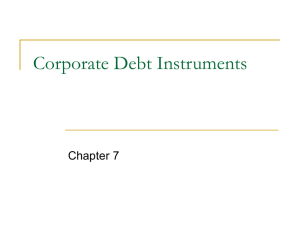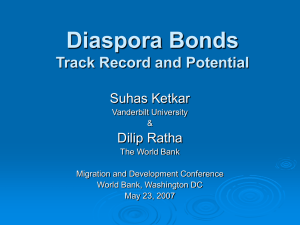Chapter 1 Understanding Services
advertisement
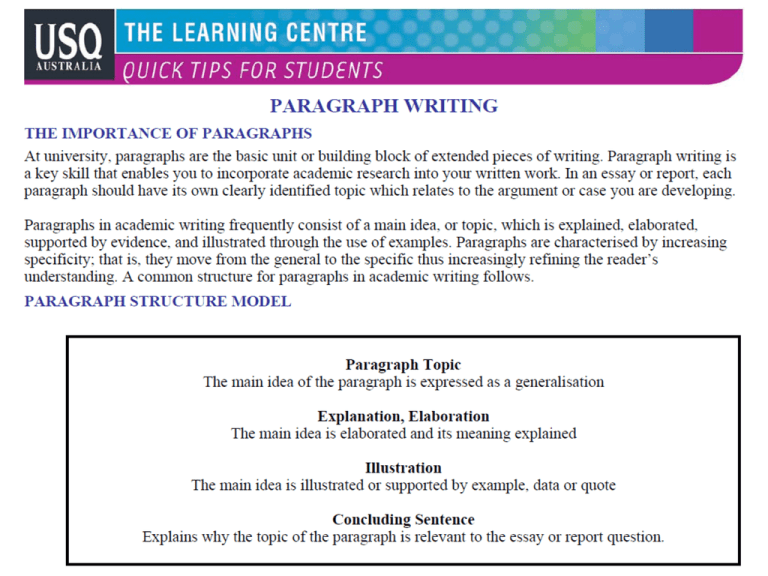
1 Marketing, financial, operations and HRM 2 • • • • • • • • • • Common research objectives for services that help us listen to the customer To identify dissatisfied customers To discover customer requirements or expectations To monitor and track service performance To assess overall company performance compared to competition To assess gaps between customer expectations and perceptions To gauge effectiveness of changes in service To appraise service performance of individuals and teams for rewards To determine expectations for a new service To monitor changing expectations in an industry To forecast future expectations 3 Criteria for an effective service research program 5 6 • Executive visits to customers • Management listing to customers • Research on intermediate customers • Research on internal customers 7 Relationship marketing • is a philosophy of doing business that focuses on keeping current customers and improving relationships with them • does not necessarily emphasize acquiring new customers • is usually cheaper (for the firm) – keeping a current customer costs less than attracting a new one • thus, the focus is less on attraction, and more on retention and enhancement of customer relationships 8 7-9 “Bucket theory of marketing” The “80/20” Customer pyramid Most Profitable Customers Best Customers What segment spends more with us over time, costs less to maintain, spreads positive word of mouth? Other Customers Least Profitable Customers What segment costs us in time, effort and money yet does not provide the return we want? What segment is difficult to do business with? 10 7-11 Profit generated by a customer over time 7-12 Relationship development model Levels of retention strategies Stable Pricing Volume and Frequency Rewards Bundling and Cross Selling Continuous Relationships I. Financial Bonds Integrated Information Systems Joint Investments Customer satisfactio Excellent Quality and Value IV. Structural Bonds Shared Processes and Equipment II. Social Bonds Social Bonds Among Customers III. Customization Bonds Anticipation/ Innovation Mass Customization Personal Relationships Customer Intimacy 13 14 8-15 Service Recovery Paradox “A good recovery can turn angry, frustrated customers into loyal ones. ..can, in fact, create more goodwill than if things had gone smoothly in the first place.” (Hart et al.) HOWEVER: only a small percent of customers complain service recovery must be SUPERLATIVE only with responsiveness, redress, and empathy/courtesy only with tangible rewards even though service recovery can improve satisfaction, it has not been found to increase purchase intentions or perceptions of the brand service recovery is expensive




